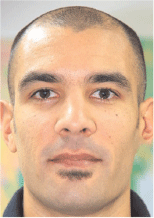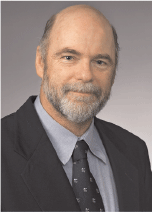Introducing the Sylvester Graben, a ?Neoproterozoic depocenter on the eastern flank of the Toko Syncline, southern Georgina Basin, Queensland
Robbert J. Willink A , Nathan C. Palmer A , Mathew Davies B , Chris Woodfull B , Peter Stuart-Smith B and Charles Verdel CA Central Petroleum Ltd.
B SKR Consulting (Australasia) Pty Ltd.
C School of Earth Sciences, The University of Queensland.
The APPEA Journal 56(2) 534-534 https://doi.org/10.1071/AJ15040
Published: 2016
Abstract
Regional 2D seismic lines acquired in 2013 along the eastern edge of the Toko Syncline in Queensland have imaged a complexly faulted, northwest–southeast trending graben below subcropping Cambrian carbonates. At its deepest, this depocenter contains some 3,500 m of sediments that are inferred to be of Neoproterozoic age, if not older at depth. Surface outcrops of this succession are mapped as the Sylvester Sandstone. Shallow core holes confirm that the uppermost ~1,000 m of sediments are of fluvioglacial, glacio lacustrine and glacial origin, overlain by a thin carbonate of Lower Cambrian age based on the occurrence of archaeocyathids. Unconformably underlying this succession is an internally reflective sedimentary section that is up to 2,500 m which has not been drilled to date.
Although the localised development of Neoproterozoic depocenters below Cambrian carbonates in the Toko Syncline has been inferred previously based on vintage seismic and gravity data, such features were not imaged as clearly as on the newly acquired seismic. Inferred sediments in this faulted graben may be correlatives of the Neoproterozoic succession in the Amadeus Basin and could be prospective for hydrocarbons as well as ore deposits.

Robbert (Rob) Willink holds a BSc (Hons) degree from the University of Tasmania and a PhD in geology from the Australian National University. He has more than 35 years of experience in the industry as a petroleum geologist and has worked for Shell in Australia, the Sultanate of Oman and in Turkey, and for the University of Adelaide, Sagasco and Origin Energy in Australia, before assuming his present role as an Exploration Advisor for Central Petroleum Ltd. He is also an Adjunct Professor in the School of Earth Sciences at The University of Queensland, and runs an industry training course under his own company, Investigative Exploration Pty Ltd. He is based in Brisbane, Queensland. |

Nathan Palmer attended Curtin University of Technology where he completed a BSc (Hons) in geophysics in 1999. He started his career as a geophysicist involved in offshore seismic acquisition in various locations and seismic data processing in Australia and the UK with WesternGeco. He is presently involved in onshore exploration as a geophysicist with Central Petroleum Ltd, based in Brisbane. Member: ASEG, SEG and PESA. |

Mathew Davies is a geologist with eight years’ experience in the Australian mining industry, including more than five years working as a consultant for SKR and three years working as an exploration geologist in the Hunter Valley of NSW. Since joining SKR in 2011, he has been involved in a range of coal and mineral-focused work including: coal and mineral exploration programs; both mapping and drilling; development of 3D geological models for coal and mineral resource evaluations; and, coal and mineral asset valuations. |

Chris Woodfull is a geologist with more than 27 years’ experience in exploration, mining geology, and environmental management, both in industry and as a consultant. He is an experienced project director and manager in a range of areas including geological risk, exploration, and independent technical reviews for the resource sector. Chris has worked on numerous exploration targeting/assessment and structural geological risk studies for minerals and coal exploration, as well as mining companies. In recent years Chris has managed a number of major geological and multi-disciplinary projects, including two multi-client basin-scale structural framework and risk studies to assist coal, CSG and minerals companies operating and exploring in the Sydney-Gunnedah Basin in NSW as well as the Bowen, Surat and Drummond basins in Queensland. |

Peter Stuart-Smith is a highly experienced and skilled regional geologist who specialises in structure and tectonics, with more than 35 years’ experience in the mineral/petroleum industry. His experience includes a broad range of geological projects encompassing areas such as structural geology, geophysics, stratigraphy, petrology, geochemistry, geochronology, and economic geology, while his expertise lies in minerals targeting, basin architecture and basin analysis. Peter is also experienced in project management and organising/presenting training programmes, specifically in the interpretation of airborne geophysical data, field structural geology, and geological mapping. He has worked on projects in Australasia, Southeast Asia, North Africa/Middle East, Europe and South America. |

Charles Verdel joined the University of Queensland (UQ) School of Earth Sciences as a lecturer in 2011, and since 2014 he has been an Australian Research Council Discovery Early Career Research Fellow. His research focuses on Neoproterozoic Earth history and the tectonic development of eastern Australia. Prior to arriving at UQ, Charles was a postdoctoral researcher at the University of Kansas (2010–11) and the University of Michigan (2008–10). He completed a PhD in geology from the California Institute of Technology in 2008, and has a BSc in geological engineering and an MSc in geology from the Colorado School of Mines. |
References
Davies, M., Woodfull, C. and Stuart-Smith, P., 2015—New SEDEX (?) and MVT provinces discovered under shallow cover in the Southern Georgina Basin. SEG 2015, World Class Ore Deposits: Discovery to Recovery, Hobart, Tasmania, 27–30 September, unpublished poster presentation.Draper, J. (2007). Georgina Basin—an early Palaeozoic carbonate petroleum system in Queensland. The APPEA Journal 47, 107–26.
Green, P.M., and Balfe, P.E. (1980). Stratigraphic drilling report, GSQ Mt Whelan 1 and 2. Queensland Government Mining Journal , .
Greene, D.C. (2010). Neoproterozoic rifting in the southern Georgina Basin, central Australia: implications for reconstructing Australia and Rodinia. Tectonics 29, TC5010.
Hill, A.C., Haines, P.W. and Grey, K., 2013—Chapter 67: Neoproterozoic glacial deposits of central Australia. In: Arnaud, E., Halverson, G.P. and Shields-Zhou, G. (eds) The Geological Record of Neoproterozoic Glaciations. Geological Society, London, Memoirs, 36, 677–91.
Kruse, P.D., Dunster, J.N. and Munson, T.J., 2013—Chapter 28: Georgina Basin. In: Ahmad, M. and Munson, T.J. (compilers) Geology and Mineral Resources of the Northern Territory. Northern Territory Geological Survey, Special Publication 5.
Lodwick, W.R., and Lindsay, J.F. (1990). Southern Georgina Basin: a new perspective. The APEA Journal 30, 137–48.
Magnier, P.H., 1965—Well completion report of Marduroo No. 1, Queensland. QDEX Company Report, 1553, unpublished.
Shergold, J., 1985—Notes to accompany the Hay River-Mount Whelan Special 1:250,000 Geological Sheet, southern Georgina Basin. BMR report 251. Canberra: Bureau of Mineral Resources.
Verdel, C., Willink, R. and Gurney, J., 2014—Neoproterozoic glacial strata of the Centralian Superbasin: new insight from subsurface data in the Southern Georgina Basin. American Geophysical Union Fall Meeting, San Francisco, California, 15–19 December, Abstract #PP43C-1490.


